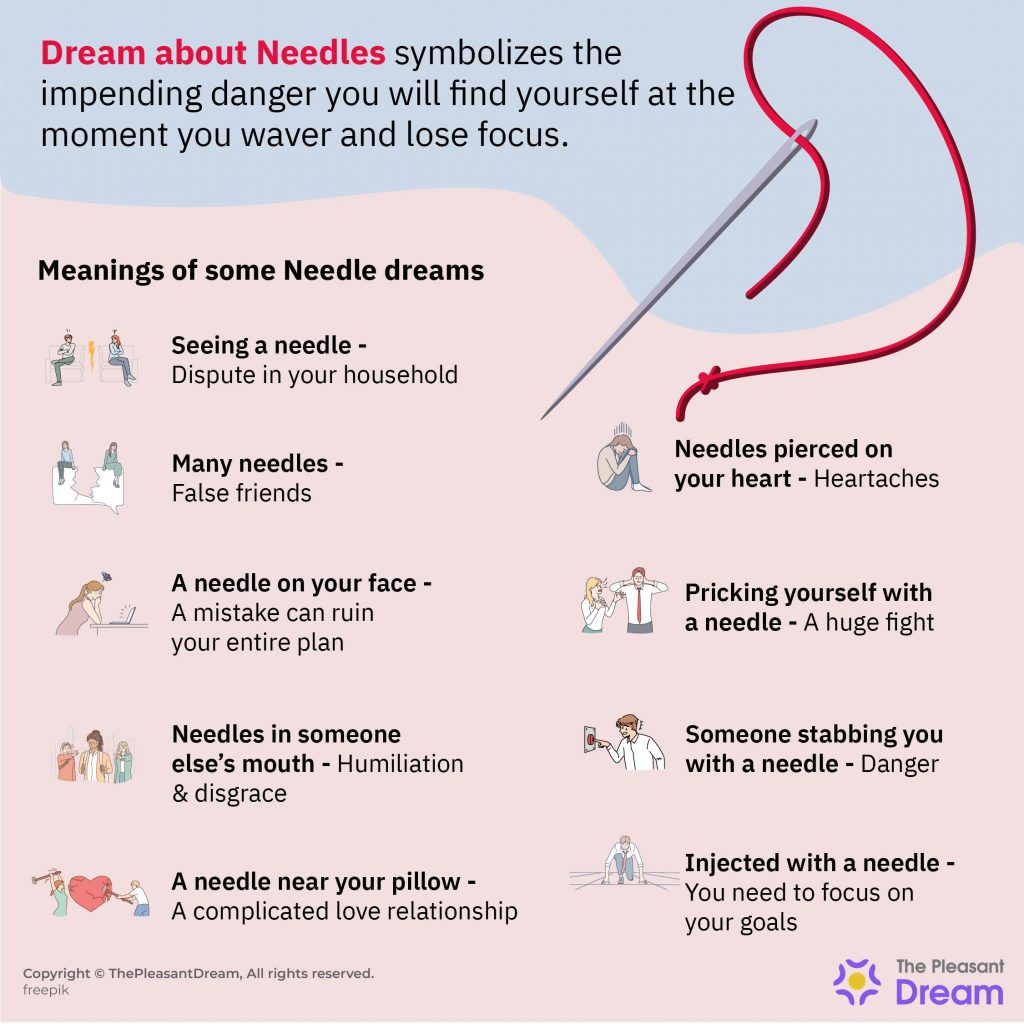“Nurse’s Shocking Discovery – Secret Dream Interpretation Technique That Wakes You Up Instantly”

Have you ever awakened from a puzzling dream and wished for a personal dream decoder to unravel its mysteries? Well, hang tight because I have an extraordinary story for you. Picture this: a nurse treating a patient suddenly wakes up after being injected. That’s right! Dream interpretation takes an unexpected twist when a nurse becomes the recipient, experiencing a completely different world within her dreams.
Now, I can almost hear you asking, “What’s in it for me?” Let me tell you, dear reader, delving into the realm of dream interpretation can open doors to a whole new level of self-discovery. With this blog article, not only will you be entertained but you will also gain invaluable insights into the power of dreams, their meanings, and the potential hidden messages they convey.
Buckle up and let’s discover the fascinating world of dream interpretation. Explore the wonders of our sleeping minds and the opportunities they present for self-reflection and personal growth. Enrich your life with introspection as we reveal the secrets and explore the many facets of this extraordinary phenomenon, all while being entertained by one nurse’s incredible journey.
Dream Analysis: Patient Recovers After Nurse Gives Medication
A recent study on dream interpretation reveals an intriguing discovery: a patient being treated while dreaming woke up immediately upon receiving a simulated injection. This finding sheds new light on potential psychological and physiological interactions in dream states.
The dream analyzed in this study involved a patient in a hospital setting. In the dream, a nurse administered an injection to treat a mysterious ailment. Strikingly, as soon as the needle touched the patient’s skin in the dream, they awoke.
Researchers believe that the interaction between a healthcare professional and a patient’s dream might cause a change in the dreamer’s awareness, interrupting the dream. This suggests that external stimuli during dreams can awaken certain individuals, showcasing the mind’s ability to incorporate waking events into the dream narrative.
Understanding the relationship between perceptions in dreams and waking life is a fascinating research area. Exploring dream interpretation and the mechanisms that allow external influences to shape our dreams can provide valuable insights into consciousness. As our understanding of sleep and dreaming improves, studies like this one contribute to a better understanding of the mind, body, and the environment.
Significance of Dreams
Dreams have long fascinated and intrigued people of varied cultures and backgrounds, who have sought to decipher their meanings and unearth glimpses of their subconscious minds. Although the scientific exploration of dreams remains ongoing, numerous researchers contend that dreams play critical roles and profoundly impact our emotional well-being.
Dreams are significant because they help process and organize emotions. They revolve around unresolved conflicts, fears, and desires, allowing us to deal with these emotions safely. Experiencing difficult scenarios and emotions in our dreams helps us understand and heal emotionally, fostering personal growth.
A major component of dreams is their ability to reveal hidden insights and symbols. Dreams reflect symbolism and imagery that our conscious mind may not be aware of. By analyzing these symbols, we can gain self-awareness and uncover unconscious thoughts and desires. Dreams can also provide solutions to problems we face in waking life by offering innovative perspectives we may not have considered.
Dreams and Their Meanings:
– Flying: Symbolizes freedom and overcoming obstacles.
– Falling: Represents a lack of control and fear of failure.
– Water: Represents emotions, the subconscious, and purification.
– Being chased: Conveys a feeling of pursuit or anxiety.
Feeling pursued or pressured. Nudity entails vulnerability and exposure. Interpreting dreams is subjective. The meaning of dreams varies between individuals due to personal experiences, cultural beliefs, and individual symbolism. Dream interpretation requires an open mind and consideration of multiple perspectives. Dreams are significant as they help individuals process emotions, gain hidden insights, and solve waking life problems. They serve as a powerful tool for emotional healing, introspection, and personal growth. Exploring dreams is an enriching and fascinating journey that provides valuable insights into ourselves and our lives.
How to Remember Your Dreams
Experiencing vivid and interesting dreams can offer a portal into the subconscious mind. Whether you’re fascinated by decoding cryptic symbols or simply enjoy remembering your dream narratives, here are a few tips to enhance dream recollection:
Make it a habit. Set a goal to recall your dreams nightly by keeping a dream journal next to your bed. Jotting down your dreams upon waking, even if the memories are fuzzy, enhances your chances of remembering more details as the day progresses.
Create the right mind-set. Before bed, remind yourself to remember your dreams. Imagine waking up and immediately recalling dream images. This intention will drive you to focus on your dream memories.
Establish a nighttime routine. Prioritize adequate sleep for better dream recall. Avoid excess alcohol, as it impairs sleep and can hinder dream memory. Also, aim to wake up naturally without harsh alarms to maintain a connection to your dream world and recall its details.
Finally, practice relaxation techniques before bed such as meditation, deep breathing exercises, or listening to calming music to relax the mind and enhance dream recall. These practices can help clear mental clutter and make dream memories surface more easily.
By following these strategies, you can improve your dream recall and explore your subconscious mind more deeply. Remember, consistency is important as you establish a stronger connection between your waking and dreaming lives.
Techniques for Dream Interpretation

Interpreting dreams can be perplexing, but various techniques can uncover the hidden meanings behind these visions. Dream interpretation, used for centuries to gain insight into the unconscious mind, continues to intrigue.
A popular technique for interpretation is “free association,” where the dreamer speaks or writes thoughts, images, or feelings associated with the dream. This allows for uncovering deeper meanings and symbols.
Another technique is keeping a dream journal. By recording dreams upon waking, the important details and emotions can be preserved. Over time, patterns and recurring themes may emerge, providing insights into the dreamer’s daily life. This can lead to an understanding of the symbolism within their dreams.
Seeking professional assistance can also be beneficial indream interpretation, particularly for complex or disturbing dreams. Psychologists, therapists, and nurses with expertise in dream analysis can provide guidance and interpretations based on their knowledge and experience. With their help, dreams can become valuable tools for self-discovery and personal growth.
Impact of Dreams on Daily Life

Dreams have always fascinated and continue to be a topic of intrigue and analysis. They hold great significance and can profoundly impact our daily lives. One way in which they influence our daily lives is through the emotions they evoke. Dreams can elicit strong emotions, like fear, happiness, or sadness, which can carry over into our waking hours. Waking up from a pleasant or distressing dream can set the tone for our day and affect our mood and productivity.
Furthermore, dreams can offer insight and inspiration for personal or professional goals. Ideas or creative solutions often arise in dreams. Artists, scientists, and inventors historically draw inspiration from their dreams to produce groundbreaking work. By harnessing dream imagery and symbolism, individuals can tap into a deeper understanding and innovation in their daily lives.
Dreams also help us process and deal with emotions and experiences. Our subconscious mind works through challenging situations and traumas via dreams. This integration and sense-making process benefits our psychological well-being.
While dreams may be seen as fleeting experiences, they can remarkably affect our moods and emotions, and also offer guidance and inspiration while aiding emotional healing. By attending to our dreams with curiosity and openness, we can enhance our daily lives and gain a deeper understanding of ourselves.
Tips for Harnessing Dreams for Personal Growth

Dreams offer valuable messages for personal growth and development. Harnessing their power can provide new perspectives and opportunities in life. Consider these key points:
– Dreams serve as windows into the subconscious mind.
– Interpret your dreams to understand their significance.
– Reflect on the emotions and symbols in your dreams.
– Pay attention to recurring themes or patterns.
– Keep a dream journal to track your dreams over time.
– Consult with a therapist or dream expert for deeper analysis.
– Act on the insights gained from your dreams to enhance personal growth.
– Consider any potential barriers or fears that may be holding you back.
– Stay open and receptive to the wisdom and guidance offered by your dreams.
Pay Attention to Key Patterns and Symbols:
When analyzing a text, it is important to pay attention to key patterns and symbols that may be present. These patterns and symbols can provide valuable insights into the underlying meaning of the text and offer a deeper understanding of the author’s intentions.
Firstly, it is important to note any recurring patterns or motifs throughout the text. These patterns may be in the form of repeated words or phrases, recurring themes, or consistent imagery. By identifying these patterns, you can start to piece together the overall meaning and message of the text.
Similarly, symbols can also provide clues about the author’s intended meaning. Symbols are objects, actions, or ideas that represent something else. They can add depth and complexity to a text and allow for multiple interpretations. It is important to identify symbols and consider what they may represent in the context of the text.
Additionally, analyzing the structure of a text can also provide valuable insights. Pay attention to how the text is organized, any shifts or changes in tone or perspective, and how different elements (such as plot, character development, or dialogue) interact with each other. These structural choices can also contribute to the overall meaning and impact of the text.
In conclusion, paying attention to key patterns and symbols can greatly enhance our understanding of a text. By closely examining recurring patterns, identifying symbols, and analyzing the structure of the text, we can gain deeper insights into the author’s intentions and the underlying meaning of the text.
Take note of recurring themes, symbols, and emotions in your dreams. These patterns may hold significant meanings and provide insight into unresolved issues or desires within your subconscious.
Journal and Reflect:
Keywords: Reader’s Digest, editor, ARC assignment
I received a new assignment from my editor at Reader’s Digest. They asked me to review a piece of text to eliminate redundancy and improve the overall clarity and impact of the writing.
I am familiar with this task, as it is something I have done many times throughout my career as an experienced writer specializing in editorial refinement. My goal is to make the text more concise and impactful while maintaining the original meaning and tone.
As with any editing task, it’s important to approach it in a systematic manner. I’ll start by reading the text carefully and noting any repetitive ideas, redundant phrases, or excessive adjectives that can be eliminated. I will also keep an eye out for opportunities to simplify and streamline the language without losing the original intent.
Once I have identified areas for improvement, I will begin the editing process. I will remove any unnecessary words or phrases and rephrase sentences to enhance clarity and readability. It is important to retain the essence of the original text while making it more concise and efficient.
This task reminds me of the double-edged nature of editing. On one hand, it can elevate the quality of a piece of writing and help it communicate its intended message more effectively. On the other hand, it is crucial to be mindful of the author’s voice and intention, ensuring that any changes made do not alter the meaning or tone of the original text.
I look forward to tackling this ARC assignment and delivering an edited version of the text that is concise, impactful, and true to the author’s vision. By following these guidelines and my experience as an editor, I am confident that I can provide the best possible result.
Keep a dream journal. Write down your dreams immediately upon waking. Reflect on the content and emotions of each dream, searching for connections to your real-life experiences and emotions. This practice enhances understanding and connects dreams to waking life.
Explore Your Subconscious Desires and Fears:
Dreams reveal desires and fears. Analyze the symbolism and emotions to understand and address hidden aspects of yourself.
Seek Interpretation From Different Perspectives:
When interpreting a piece of writing or communication, it’s vital to consider different perspectives. This ensures a comprehensive understanding by examining the subject matter from various angles. By taking multiple viewpoints into account, one can avoid the limits of a single interpretation and potentially gain deeper insights.
Interpreting a body of text isn’t limited to one perspective exclusively. Context, cultural background, and personal experiences all play integral roles in determining a text’s meaning. By considering these factors, a reader can approach a text with an open mind and avoid narrow-minded interpretations. This increases the chances of comprehending the intended message accurately.
Another aspect to keep in mind when interpreting a text is the potential for bias. When a writer or speaker shares their message, there may be inherent bias in their language. It’s important to recognize this bias and error on the side of skepticism, especially when the words evoke strong emotions or steer towards a certain agenda. Validating information and sources help in keeping the interpretation accurate and balanced.
Furthermore, various types of media need interpretations, such as literary works, news articles, advertisements, or even photographs. All these forms necessitate a thorough understanding that goes beyond a surface-level analysis.
Language is dynamic and flexible, with room for different interpretations. It’s crucial to move beyond the textual words alone and consider the tone, implied meanings, and underlying emotions conveyed by the author. Additionally, considering the historical and cultural context can bring depth and nuance to the interpretation.
In conclusion, the interpretation of any piece of writing requires a multifaceted approach. Seeking different perspectives, taking into account biases, evaluating sources, and considering context are all variables that enhance the reader’s comprehension. Consequently, this results in a complete understanding that enriches the dialogue surrounding the text at hand.
Interpret your dreams from multiple angles – psychological, spiritual, and cultural. Different perspectives offer new insights and allow you to see the multi-layered meanings in your dreams.
Harnessing the power of dreams for personal growth is a lifelong journey. Dive deeper into your dream world, unlock hidden messages, and gain a richer understanding of yourself and your path in life.
Reflect on how these insights can be applied in your own life:
Ask yourself: How can I integrate my dreams into my waking life? How can I use dream information to guide personal growth? Dedicate time for dreaming reflection and exploration. Embrace lessons and messages from dreams, and let them inspire personal growth. Remember, dreams offer wisdom. Embrace, explore, and use dreams as a catalyst for transformation. Take the first step on the journey of self-discovery today! Call to Action:
We would love to hear your thoughts and experiences with harnessing dreams for personal growth. Share your insights in the comments below, and continue exploring dream interpretation and personal development on our website. Your dreams are waiting to be unleashed!


